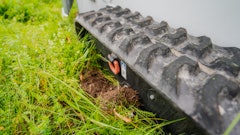
Many of us remember the days before ethanol fuels, when oil options were limited and air filters needed to be changed frequently. Those days are fading as engines continue to advance and manufacturers develop features that reduce maintenance and downtime. While these trends make maintenance easier, they also make it as important as ever to know your engines’ specifics. Ultimately, being proactive about maintenance and staying on top of new technology will lead to reduced downtime and go a long way toward being more productive.
Fueling Productivity
Getting the most out of an engine still starts with the fuel you put in the tank. The days of choosing between regular, unleaded and diesel, however, are long gone. The development of ethanol fuels created the need to be more mindful about fuel choices. Today’s commercial engines can tolerate ethanol fuel blends up to 10 percent, however using ethanol can lead to fuel system problems — in large part because ethanol attracts water, which can lead to corrosion within the carburetor. While lower levels of ethanol — 10 percent or less — are generally safe to use, it’s best to avoid ethanol whenever possible. Among the ethanol-free options, any gasoline with an octane rating of 87 or higher will typically be a safe bet, especially if storage in higher ambient or high humidity is unavoidable.
From the moment fuel is added to the engine’s tank, it begins to lose volatility, eventually becoming stale through oxidation and chemical breakdown. This is typically only a problem if the engine sat idle for a month or more without being started or having fresh gasoline added. Filling with fresh gasoline appropriate for the season will help to delay the effects of stale fuel by preventing diminished performance, vapor lock and other potential setbacks.
To get the most out of your fuel, consider using a fuel stabilizer to combat stale fuel in equipment that tends to sit for periods of time. Many of these products are also formulated to combat the corrosive effects of ethanol fuels, inhibit chemical reactions that lead to corrosion, and prevent gum and varnish build-up within the engine.
A Well-Oiled Machine
Regularly scheduled oil changes shouldn’t be a new concept for anyone working with engines, and staying on top of oil changes is particularly important for small air-cooled engines due to the high temperatures at which they operate. A general rule has been to change oil every 100 hours of operation for most equipment and every 50 hours for some small utility equipment. Oil that’s used beyond its suggested service life loses viscosity, its additive package and its ability to properly clean, cool and lubricate. This can put a damper on engine performance and cause lasting damage that will reduce the engine’s life.
Today, improvements to synthetic and conventional oils, as well as advanced oil management systems, are extending oil change intervals. While that’s good news, it also makes it more important than ever to know the guidelines for each engine in your fleet to make sure you’re not wasting money by changing oil too soon and also not running the risk of causing damage by waiting too long.
Always check the owner’s manual and engine warranty guidelines for the recommended oil type. Most small engines use SAE 30, as long as the engine is used in areas where the temperature remains at least 40 degrees Fahrenheit. It’s a good idea to consider full synthetic oil options, which are typically formulated to withstand prolonged use in high heat environments, compared to semi-synthetic and mineral-based oil. In some synthetics, a zinc additive provides anti-wear protection from metal components while a high-quality detergent in the blend ensures lower engine deposits over time.
To further extend oil change intervals, Briggs & Stratton recently developed Oil Guard, which extends intervals to as much as 500 hours by continually exchanging the oil in the engine with oil in an external reservoir. This reduces thermal breakdown of the oil by cycling it out of the engine and allowing the oil to cool in the reservoir before going back into the engine. This also works to reduce the temperature of the engine, and anything that keeps engine temperatures in check is positive for overall performance.
Beat the Heat
For air-cooled small engines, fresh air is one of most important ingredients for sustaining performance, making regularly scheduled air filter changes key. Depending on the application and type of filter, air filters generally need changing every 100 to 250 hours.
While the negative effects of a dirty or clogged air filter are well-known, improvements in filter medium as well as the development of cyclonic air filtration have changed the game for air filtration. Choosing OEM filters guarantees the right fit as well as a design optimized for the particular engine’s performance. Plus, those filters can last as much as three times longer than bargain filters. Not only will this reduce how often the air filters need to be changed, it also will result in better running, more productive equipment over the life of the filter.
Reviewing the air filter guidelines for any new engines in your fleet can also save from unnecessary filter changes. Many of today’s commercial engines feature high-performance air handling systems that manage debris well, preventing the majority of it from ever reaching the air filter. This is especially beneficial for high-debris applications such as turf. These new systems, paired with a superior air filter, can greatly reduce filter changes compared to engines from only a few years ago.
Always Stay a Step Ahead
As technology improves and engine maintenance simplifies, choosing the proper fuel and staying on top of oil and air filter changes remain pivotal for productivity. Remember that keeping up with the trends and knowing the specifics for each of your engines is important for making your dollar — and productivity — go further.




















